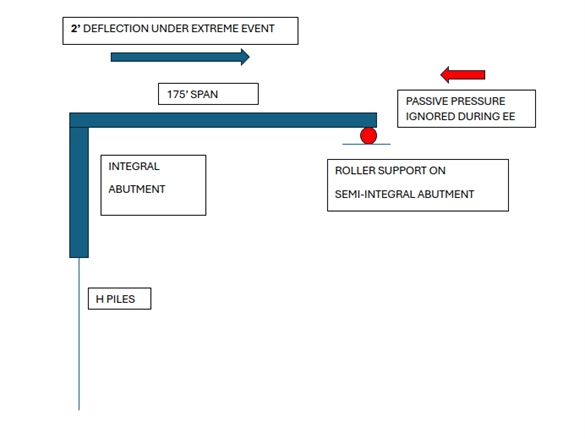bridgebuster
Active member
We have a project under construction. 175' long integral abutment bridge. Due to a number of issues related to pile driving at one abutment, the owner asked about changing one abutment to semi-integral and using drilled-in micropiles. The designer said it was impossible because under an extreme event, the integral abutment will deflect 24" towards the semi-integral abutment. The bridge, as designed, deflects less than 1" under extreme event. I believe the designer has an error in the semi-integral model. See below. I asked why he wasn't including soil springs for the semi-integral abutment back wall. He said it's never done, which doesn't make sense to me. Can some one give me a sanity check or am I wrong?


